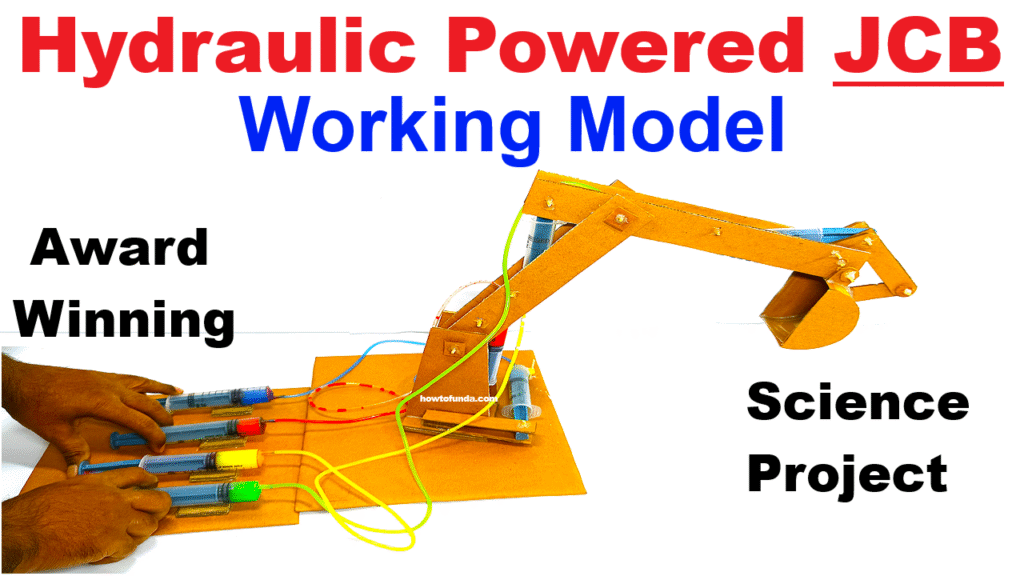In this video, learn how to build a fully functional Hydraulic JCB (Backhoe Loader) Model using cardboard, syringes, and tubes. This model is ideal for school science exhibitions and helps explain Pascal’s Law and real-world applications of hydraulics in construction machinery.

Step-by-Step Video Instructions:
1. Create the Base:
- Cut and glue cardboard into a stable JCB platform.
- Add wheels (optional: made from bottle caps or cardboard circles).
2. Build the Cabin:
- Make a cabin structure on top of the base using cardboard.
- Design it to look like a JCB driver’s compartment using black and yellow paper.
3. Construct the Arm & Bucket:
- Make two segments of the arm using cardboard or ice cream sticks:
- Upper arm (boom)
- Lower arm (dipper)
- At the end, attach a cardboard bucket (scoop) using skewers to make it move.
4. Install Syringes (Hydraulic System):
- Attach fixed syringes to the base and moving parts of the arm.
- Connect corresponding control syringes with IV tubing filled with colored water.
- Suggested setup:
- One syringe pair for boom up/down
- One pair for dipper in/out
- One pair for bucket scoop movement
5. Hydraulic Connection:
- Fill all syringes with water.
- Connect each pair tightly with tubing (make sure there are no air bubbles).
- Press/pull the control syringe to see the JCB arm and bucket move.

